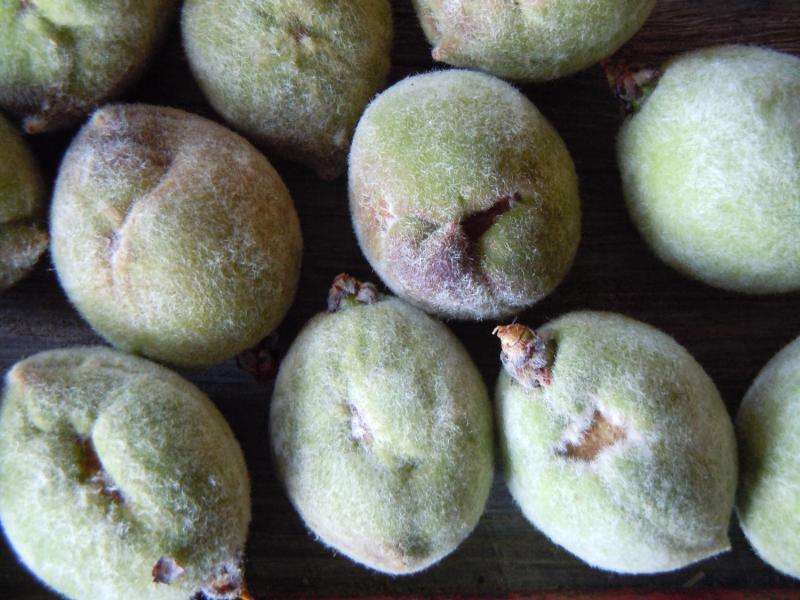Management strategies to reduce catfacing in peaches

For producers of peaches and other orchard-grown produce, managing the orchard floor can present challenges. Unwelcome vegetation on the orchard floor competes with trees for water and nutrients reducing tree growth and productivity, and can be a host for pathogens and insect pests. Utilizing best practices for irrigation and vegetation management in the orchard helps growers to optimize tree growth, fruit yield, and fruit size. Scientists at North Carolina State University published a study in the May 2015 issue of HortScience that includes guidelines that can help increase tree vigor and fruit yield, and limit damage from hemipteran or "catfacing" insects - pests that damage and distort peaches and other fruit.
Connie Fisk, Michael Parker, and Wayne Mitchem from the Department of Horticultural Science at North Carolina State University conducted a study of young peach trees to test six vegetation-free strip widths under trees. The researchers also tested supplemental irrigation treatments.
Mike Parker, corresponding author of the study, explained that significant damage to peach fruit can occur in North Carolina resulting from hemipteran insects such as the tarnished plant bug and stink bugs. "The damage from these insects results in significantly distorted fruit shape (often referred to as catfacing) and are managed using 2-4 early-season pesticide applications," Parker said.
Fisk, Parker, Mitchem conducted the experiment using six vegetation-free strip widths (0, 0.6, 1.2, 2.4, 3.0, and 3.6 m) with or without microsprinkler irrigation on young 'Contender' peach trees. Data was collected over 6 years at the Sandhills Research Station in Jackson Springs, North Carolina.
"Trunk cross-sectional area (TCSA), as a measure of tree growth, increased with increasing vegetation free strip width; trees grown in the 3.6-m vegetation-free strip had TCSAs 2.2 times greater, on average, than trees grown in the 0-m vegetation-free strip," the authors said. "TCSA also increased with irrigation; trees grown with irrigation had TCSAs 1.2 times greater, on average, than trees grown without irrigation."
Results also showed that peach fruit yield, average fruit weight, and average fruit diameter increased with irrigation in three of five years (two years had higher than average rainfall, thus reducing the need for supplemental irrigation).
In regard to limiting or controlling catfacing insects, the results indicated benefits with a vegetation-free strip under the tree (eliminating all weeds, not just winter annuals) as narrow as 0.6 m. "This could potentially reduce the amount of insecticide that will need to be sprayed each year," the scientists said. "The use of a vegetation-free strip in the tree row will certainly not eliminate the need for insecticide sprays but will make them more effective," they said.
More information: The complete study and abstract are available on the ASHS HortScience electronic journal web site: hortsci.ashspublications.org/c … nt/50/5/699.abstract
Journal information: HortScience
Provided by American Society for Horticultural Science

















